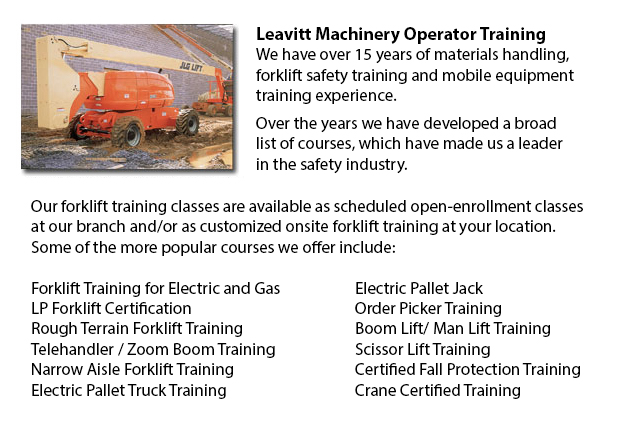
Boom Lift Safey Training Scottsdale - Boom lifts are a type of aerial lifting device or elevated work platform which are usually used in construction, industry, and warehousing. Boom lifts can be used in virtually any environment because of their versatility.
Elevated work platforms enable personnel to access work places that would be inaccessible otherwise. There is inherent danger in the operation of these devices. Workers who operate them must be trained in the proper operating procedures. Avoiding accidents is vital.
Boom Lift Training Programs cover the safety factors involved in using boom lifts. The program is suitable for those who operate self-propelled boom supported elevated work platforms and self-propelled elevated work platforms. Upon successful completion of the course, Individuals who participated will be issued a certificate by somebody licensed to verify finishing a hands-on evaluation.
To be able to help train operators in the safe use of elevated work platforms, industry agencies, federal and local regulators, and lift manufacturers all play a role in establishing standards and providing the necessary information. The most essential ways to prevent accidents connected to the utilization of elevated work platforms are as follows: putting on safety gear, conducting site assessment and checking machinery.
Key safety factors when operating Boom lifts:
Operators need to observe the minimum safe approach distance (MSAD) from power lines. Voltage can arc across the air to be able to find an easy path to ground.
A telescopic boom should be retracted before lowering a work platform so as to maintain stability as the platform nears the ground.
Personnel working from the Boom lift platform should tie off to ensure their safety. Safety harness and lanyard combinations must not be attached to any anchorage other than that provided by the manufacturer, never to other poles or wires. Tying off may or may not be needed in scissor lifts, that depends on particular employer guidelines, job risks or local regulations.
Avoid working on a slope which exceeds the maximum slope rating as specified by the manufacturer. If the slop goes beyond requirements, therefore the machinery must be transported or winched over the slope. A grade could be measured without problems by laying a minimum 3-feet long straight board or edge on the slope. Next a carpenter's level can be laid on the straight edge and raising the end until it is level. The per-cent slope is obtained by measuring the distance to the ground (also known as the rise) and dividing the rise by the length of the straight edge. Next multiply by 100.
-
Crane Certification Scottsdale
Crane Certification Scottsdale - The Crane Certification Program consists of the industry suggested subject matter that would teach the efficient and safe operation of cranes. The person would train in the following: pre-operational, operational and... More -
Heavy Equipment Operator Training Scottsdale
Heavy Equipment Operator Training Scottsdale - Heavy equipment operator training facilities that provide good standards within the business, offering field performance tasks and additional equipment training are really sought after training features.... More -
Heavy Equipment Training School Scottsdale
Heavy Equipment Training School Scottsdale - HEO or the heavy equipment operator courses would provide you with the skills and knowledge required so as to enter the workforce as an entry level heavy equipment operator. In this twelve week course plus... More -
Crane Operator Classes Scottsdale
Crane Operator Classes Scottsdale - For the operators and the supervisors, current and new, the crane operator training course is suitable for all. Course content deals with applicable federal, provincial and state safety regulations. The training's... More -
Forklift Operator Certification Scottsdale
Forklift Operator Certification Scottsdale - Certification for forklifts are required to guarantee the safe operation of forklifts for those employers in warehouse, construction and industrial environments. The training needs to involve a method of e... More -
Crane Training Schools Scottsdale
Crane Training Schools Scottsdale - Our different programs for Mobile Crane Operation are meant for skilled operators who needs certification or re-certification, and for inexperienced people who are searching for their very first job as an operator... More -
Aerial Boom Lift Training Scottsdale
Aerial Boom Lift Training Scottsdale - Aerial Boom Lift Training is necessary for any individual who supervises, operates or works near boom lifts. This particular type of aerial lift or aerial work platform is utilized for lifting individuals, mater... More -
Telehandler Training Scottsdale
Telehandler Training Scottsdale - Telescopic handlers often known as telehandlers for short, are an extremely popular piece of heavy construction equipment. They are widely used in the construction and agricultural industries. These equipments have f... More

Forklift Training Scottsdale
TOLL FREE: 1-888-254-6157
Scottsdale, Arizona
forkliftcertificationscottsdale.com
Email Us
About Us


